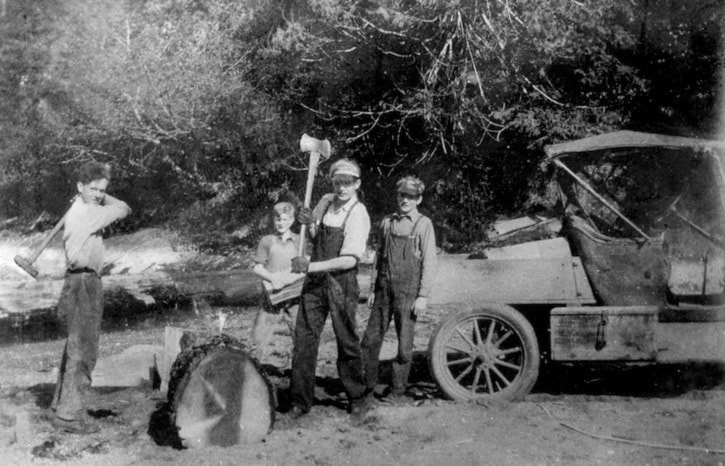Communes that sprang up throughout North America in the years after World War II were hardly a new phenomenon. In our own little corner of the woods we had a group in the 1920s that encompassed about 400 souls. They first set up a substantial camp town that was spread throughout the Whiffin Spit, Nordin Road and Wright Road area. While many lived in tents, they also built a two-storey tabernacle, or meeting house.
Much has been written about the Standfast Bible Student colony, or Star Construction Company. They were part of an international movement of scattered groups of individuals who came together to give up their worldly possessions and share communal living while awaiting “the Second Coming.”
The Standfast group arrived in Sooke in 1922/23 and developed a series of communal enterprises. Dissatisfaction spread through the colony within two or three years, with groups of families moving off in different directions.
What is not so well known is that some of the colony decided to try again in Port Renfrew, and took passage on the Princess Maquinna. This smaller band of families settled in what they called Rainbow Valley, a site they chose as particularly fertile for growing produce in the sun and rain-streaked valley near the San Juan River.
From the mid to late 1920s this fellowship of families cleared the land and harvested bounty from the earth, before disbanding once again. The youngsters did not attend public school but were taught in their own classes. Descendants of these families, who have shared their history with us, are to be found in Sooke, Port Alberni, Seattle and Victoria.
In the photo, Charlie Tannock is wielding a double-bitted axe as his fellow brethren, Elmer Nichols, John Wainscot and Sverre Bolstad stand by to help with the firewood. They are loading wood blocks on to the deck of a “Model T” converted into a truck, and seem to have dragged a chain-wrapped Douglas-fir log from the beach.
While folk connected to the Whiffin Spit and Rainbow Valley colonies continue to make contact with the museum, it is unlikely there is anyone living today who themselves grew up in these communes.
Elida Peers,
Historian
Sooke Region Museum
